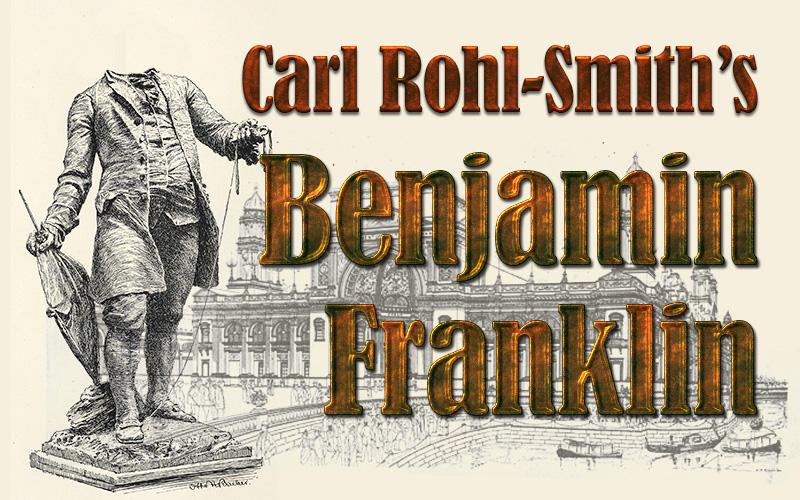
[Part 1 of this article describes the commission and construction of Carl Rohl-Smith’s statue of Benjamin Franklin for the Electricity Building at the 1893 World’s Columbian Exposition.]
“I begin to be almost sorry I was born so soon, since I cannot have the happiness of knowing what will be known one hundred years hence.”
—Benjamin Franklin, July 27, 1783
The capital of the world vanished like a sweet dream after the fairgrounds of the 1893 World’s Columbian Exposition in Chicago closed on October 30, 1893. What remained uncertain was whether Carl Rohl-Smith’s plaster statue of Benjamin Franklin that stood in front of the Electricity Building would be moved to a new home, used to make a permanent bronze casting, or be lost to neglect.
Even as the artist was completing his work the year before the Fair opened, rumors circulated that someone among the host city’s growing millionaire class might have the work cast in bronze and “add it to the growing number of Chicago’s art treasures.” [Allison 828] By the end of the Fair, however, no one in Chicago had stepped forward. “Much regret was expressed because the beauty of the grounds would soon pass away and the magnificent buildings be destroyed,” reported Exposition President Harlow Higinbotham. As workers dismantled the fairgrounds and the temporary nature of its construction became increasingly apparent, a request came from Pennsylvania asking for the statue of Benjamin Franklin. After being referred to committee, the Exposition granted the request.
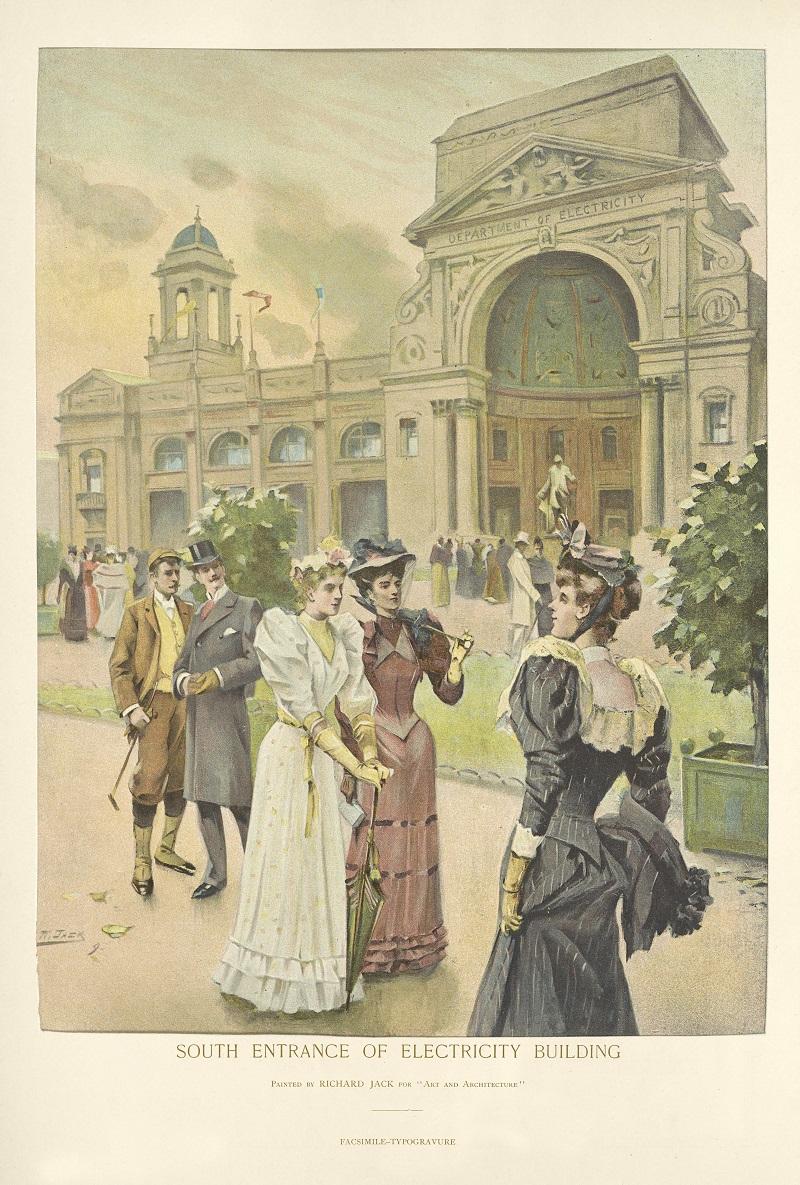
Richard Jack’s watercolor of the south entrance to the Electricity Building, showing Carl Rohl-Smith’s Benjamin Franklin statue in the portico. [Image from Walton, William Art and Architecture of the World’s Fair. George Barrie & Son, 1893.]
Franklin Heads Home
By early 1894, the press was announcing that the Directors of the World’s Columbian Exposition would present Rohl-Smith’s statue to the city of Philadelphia; subsequent reports clarified that the University of Pennsylvania would receive it. (Several news stories, mostly years later, incorrectly stated that the University had bought the statue.)
Although the memory of their founder remained fresh at the University of Pennsylvania, the campus lacked a suitable sculptural tribute to him. That changed with the arrival of the statue of the lighting catcher. By April 1894, Benjamin Franklin had arrived in his hometown. If the plaster had remained for much longer in Chicago, it certainly would have succumbed to the massive fire that destroyed the Electricity Building and surrounding structures on July 5, 1894.
Despite escaping that tragic end in Chicago, the Exposition’s gift arrived on the Penn campus in damaged condition. Artisans repaired the partly shattered sculpture and gave it a coat of bronze paint to mask the wear, prevent further decay, and (possibly) to give the illusion of a lasting memorial. It didn’t work.
The intent of University officials had been to place the tribute to their founder inside the library, but upon its arrival they discovered that the work was much too large to be erected there. Instead, they placed it on a wooden pedestal on the north side of the library building (now the Fisher Fine Arts Library). A campus survey map from October 1895 shows its exact position. There, Benjamin Franklin stood ready for a “very interesting service” that would “attract great attention throughout the city” on the morning of on June 6, 1894, as part of Alumni Day during Commencement Week. [“Commencement Week”]
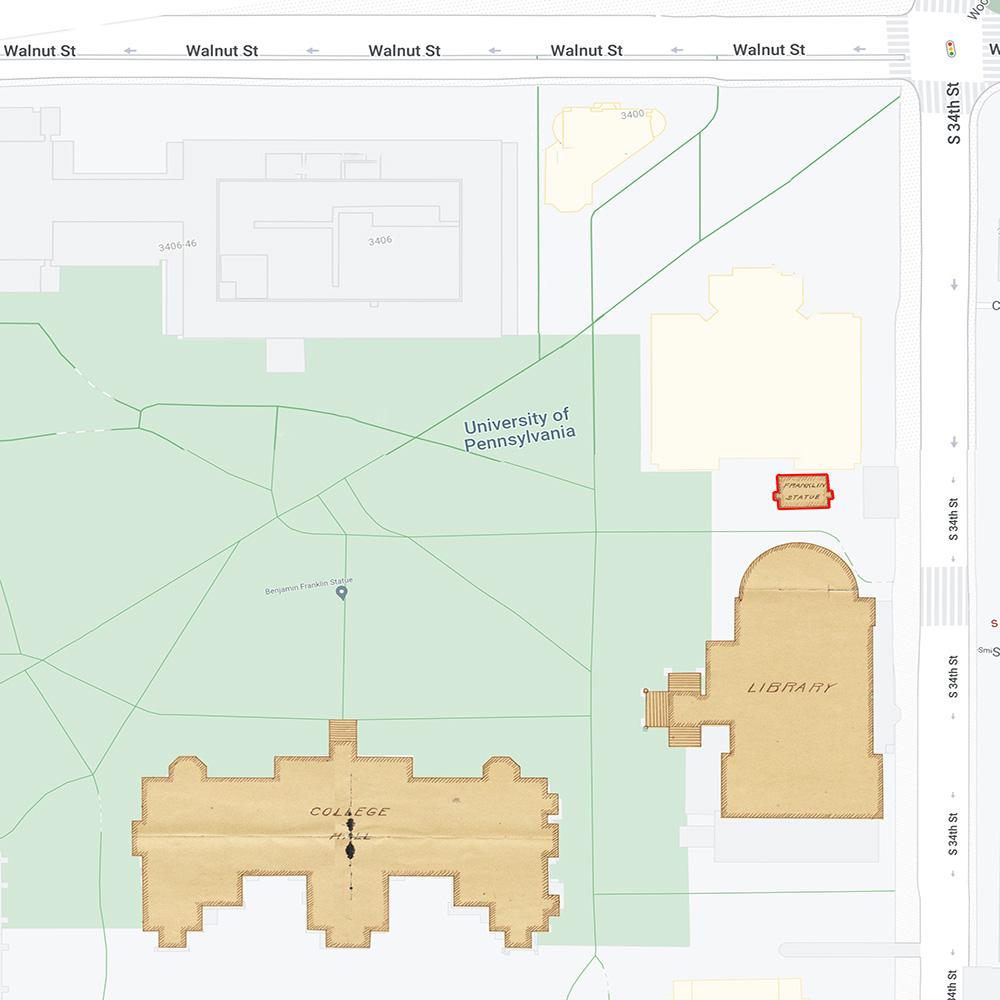
A map of the University of Pennsylvania campus today with an overlay from an 1895 survey map (shown in parchment color), showing the location of Rohl-Smith’s Benjamin Franklin statue (outlined in red) just north of the Library building. Note the current location of John J. Boyle’s Benjamin Franklin statue (discussed below) in front of College Hall, just to the west.
Franklin deemed fitting
When the morning of the presentation and dedication ceremony for the lighting-catcher statue arrived—perhaps appropriately—so did a rainstorm.
While elaborate exercises preliminary to the unveiling took place inside the library, torrential rain soaked the college colors draping the big statue, causing a spasm of blue and red to spread across old Ben. A large gathering of enthusiastic alumni, friends of the University, and admirers of Franklin attended the ceremonies, led by Provost William Pepper.
Among the distinguished members of the platform party was Benjamin Franklin’s great-great-great grandson, Russell Duane, Esq., (b. 1866), a Penn Law School graduate from the class of ’91 who presented an oration on his illustrious forefather. In Duane’s dedication speech, he addressed retiring Provost Pepper and stated that …
“it has been deemed fitting that this statue should be erected to the memory of Franklin. It is the gift of the Commissioners of the World’s Fair at Chicago; and it has been brought hither from that great concourse of nations, from its position before the building dedicated to his favorite science … It is fitting that it should be erected here in this city of Philadelphia in which his youth was passed, where he achieved his renown, and to which he returned in his eightieth year from the service of his country at the Courts of four European Sovereigns. It is fitting that it should stand here upon ground dedicated to the sacred cause of learning, and beneath the shadow of the institution which he loved, and which is his real memorial.” [Duane]
At the conclusion of the ceremonies inside, Dr. Pepper and Mr. Duane unveiled the statue on the lawn while a band played the song “Ben Franklin ” and the gathered crowd cheered.
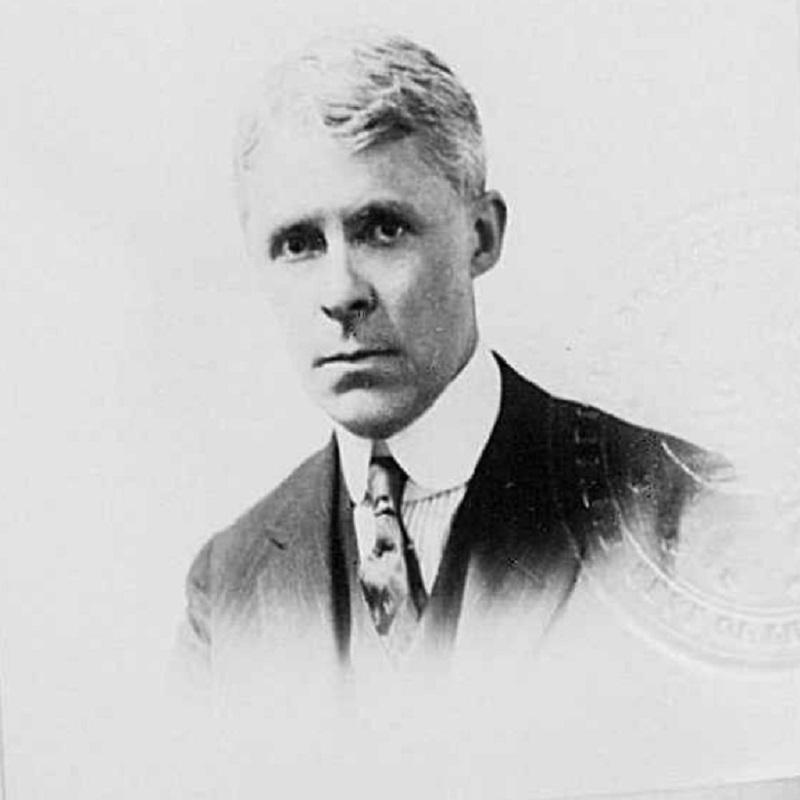
Russell Duane, a lineal descendant of Benjamin Franklin and Penn alumnus, delivered the dedication speech for the statue of his ancestor on the campus he founded. [Passport photo c 1922.]
As fundraising fails, Franklin fragments
Although not included in the printed transcription of his dedication address, Duane reportedly called for a more permanent statue of his ancestor. According to the Philadelphia Inquirer, he “expressed the hope that the temporary and perishable effigy of plaster would be shortly replaced by a statue of enduring bronze, that the memory and life-long laborers on behalf of a higher education of his illustrious ancestor might be forever perpetuated by Pennsylvania’s foremost educational institution.” The newspaper summarized the efforts to fund an enduring version of Rohl-Smith’s tribute, and the shifting opinion of the statue’s merit:
“Provost Pepper was of the opinion that the money necessary to have the statue cast in bronze could be easily raised, and several patrons of art stood ready to head a subscription for that purpose. When the statue had been in position a few weeks and the critics had had an opportunity to give it a thorough examination there was a radical change of sentiment as to the advisability of reproducing that particular effigy in bronze, and the statue has been allowed slowly to crumble away.… It was about this time that the university critics began to find fault in the statue of the great kite flyer, and not only was the pose of the figure and the contour of the features condemned, but one over-captious critic declared that the idea sought to be conveyed was badly executed. Franklin is represented with his head thrown back and his eyes fixed heavenward, while in one hand he holds an electric conductor affixed to the string of the kite, which he is supposed to have sent up one day at 9th and chestnut streets on the plot now occupied by the post office building; but then the grounds of the medical school of the then infant university. ‘While the statue was in its original position in front of the Electricity building, and was plainly labeled ‘Franklin,’ argued this super-sensitive critic, ‘it was alright, and everybody knew that it represented the philosopher in his kite-flying act. When it was transplanted to the campus of the University the changed environment destroyed the artistic symmetry of the conception, and one would as soon take it to represent a shortstop on a baseball field waiting to stop a hot ball as what it was really intended to depict the thing was simply ridiculous, and I’ll be glad when such an unartistic monstrosity is torn down.’” [Franklin’s Statue Going to Decay”]
The “unartistic monstrosity” lasted for just over a year on the Penn campus. At least initially, students must have enjoyed the memorial, as the Penn Class of ’98 took their class photo in front of the Franklin statue in December 1894. Just two weeks earlier in Philadelphia, serial killer H. H. Holmes finally had been apprehended by police; his trial would begin there on October 28, 1895. As that grisly era of murder and mayhem coming to an end, Benjamin Franklin faced its own imminent death sentence—from the elements. Defying the winter chill and spring thaw working on the plaster, the likeness of the natural philosopher silently consulted the heavens from the classic campus he had founded.
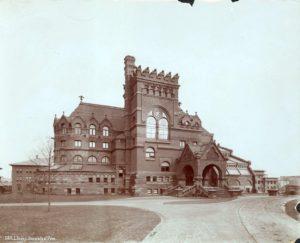
The University of Pennsylvania library building (now the Fisher Fine Arts Library) in 1894, just before Carl Rohl-Smith’s Benjamin Franklin plaster statue was installed on the north side (left edge of this photograph). [Image from the University of Pennsylvania.]
Going to pieces
By August of 1895, the heroic plaster statue showing Benjamin Franklin in the act of drawing lightning from the clouds was “going to pieces under the influence of wind and rain” reported the Philadelphia Inquirer, which provided this grisly description of the state of decay:
“When the statue was brought on from Chicago and placed upon the wooden pedestal which supports it, the artist gave it a coat of bronze paint. Atmospheric changes have turned this figmentary coat all sorts of colors and the sun has peeled it off in great patches, particularly about the face, so that the countenance of the philosopher looks as though he might be suffering from a severe and fatal attack of leprosy. Big chunks of the plaster have dropped out of his back, and a similar disintegration about the legs make him decidedly wobbly looking. The tip of his nose is gone, and one eye looks as though it had been struck by a bolt of the fiery fluid he is supposed to be looking for. Before the school year begins the unsightly object will be taken down and the wooden pedestal removed. The statue has been in its present position a little over a year. … If the university authorities don’t stir themselves and get Benjamin’s effigy out of the way speedily it will fall apart itself. In the meantime no one is prepared to say when a permanent statue will be designed, nor what artist will be selected to perform the work.” [“Franklin’s Statue Going to Decay”]
The statue had suffered irreparable damage by November of 1895. “It withstood successfully one winter season, but the summer’s heat decayed it throughout,” reported Western Electrician. “First the kite, which was greatly prized, was lost and now the head is gone.” [“Rohl-Smith Statue …”] The sculpture that had been celebrated as “one of the finest pieces of statuary on the grounds” of the 1893 World’s Fair met an ignoble end as the now-decapitated Benjamin Franklin was tossed in the junkpile.
Adding insult to injury, memory of its creator also disintegrated. Even before the statue came down, a newspaper article attributed Rohl-Smith’s work to eminent sculptor Augustus Saint-Gaudens, though, perhaps the true author would have taken this as a compliment. Adding to the confusion, a history of the University of Pennsylvania from 1918 incorrectly describes a plaster statue of Benjamin Franklin as being made by Carl Bitter, recording that it “stood for a number of years near College Hall,” but finally crumbled. “Efforts were made to have it cast in bronze, so that it might permanently adorn the campus, but the necessary fund were not available.” [Nitzsche 76]
In a final slight to Rohl-Smith, funds were raised quite quickly for two other statues of Franklin.
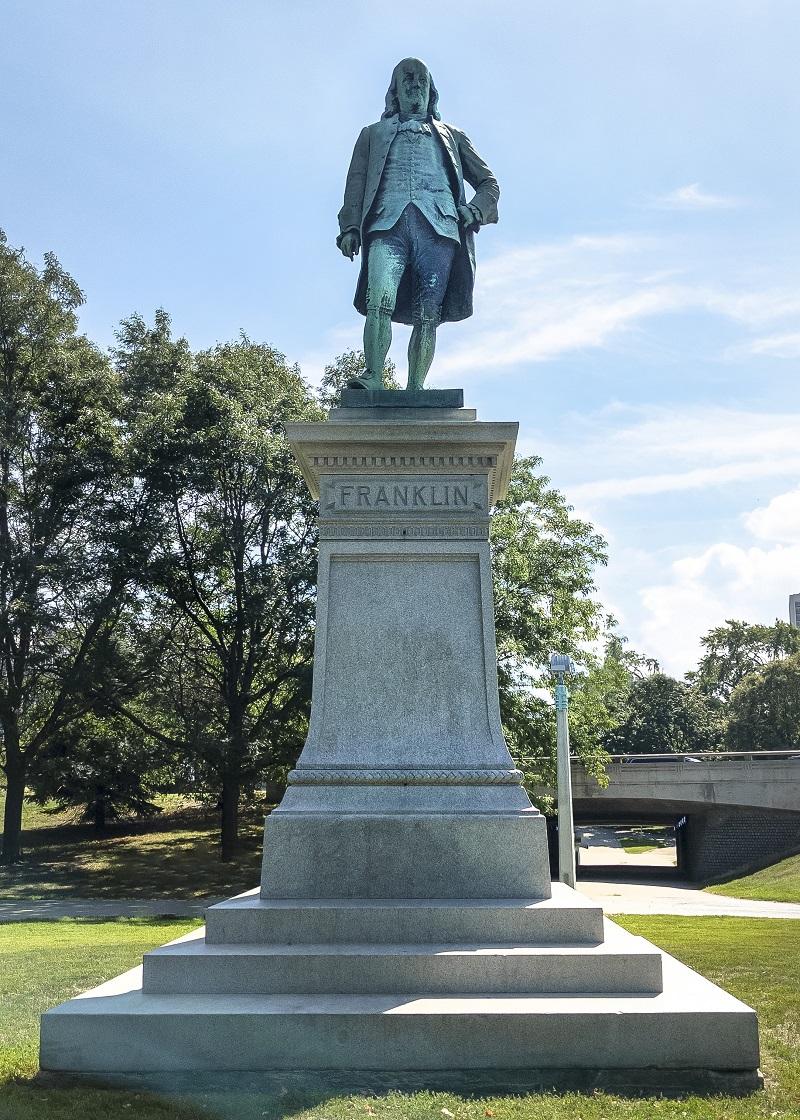
Richard Henry Park’s bronze Benjamin Franklin (1895) sculpture in Lincoln Park, Chicago. [Photograph from 2022.]
Keep his memory fresh
As Rohl-Smith’s Benjamin Franklin crumbled in Philadelphia, Chicago pined for its own tribute to the Republic’s founding father. In 1895, Chicago Tribune editor Joseph Medill and the Old-Time Printers’ Association hired another Columbian Exposition sculptor, Richard Henry Park, to create the work. As the creator of the famous silver statue of Justice, displayed in the Montana section of the Mines and Mining Building, this Chicago sculptor would have been well aware of Rohl-Smith’s notable Franklin statue from the World’s Fair. For this new work, Park chose a similar standing pose, though did not depict the famous lighting experiment scene. Chicago brought in a (different) lineal descendent of Benjamin Franklin for the dedication ceremony on June 6, 1896. Chicago installed Park’s Benjamin Franklin in Lincoln Park, and the sculpture stands today in a nearby location. About the subject of his commission, Medill wrote: “I have deemed it a personal duty to keep his memory fresh in the minds of Chicago’s youth.”
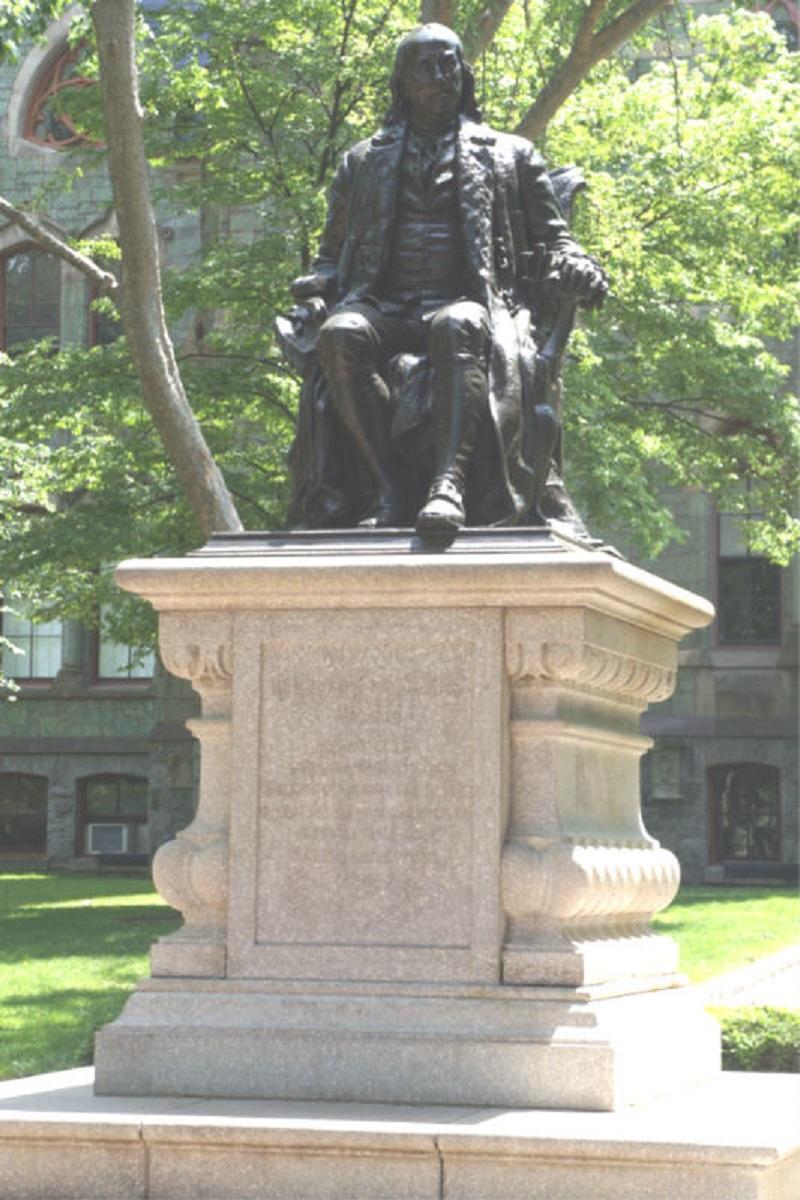
John J. Boyle’s Benjamin Franklin on the campus of the University of Pennsylvania. [Photograph from Philadelphia Public Art.]
“reminds us that we have here, at the University at which he founded and fostered, no fitting memorial of that eminent man. True, there is a plaster statue, if we honor that structure which stands just north of the Library with that name, but it seems to us that it is equally a disgrace to the memory of him it commemorates and to the University which erected it.” [“The recent gift …”]
Justus Clayton Strawbridge, of Philadelphia’s Strawbridge & Clothier department store, answered the call and commissioned local sculptor John J. Boyle in 1896 to create a new statue of Franklin. Boyle had just a few years earlier made a sculpture of the Quaker statesman to decorate the Pennsylvania State Building at the Columbian Exposition. Boyle also provided sculptural decorations to the Transporation Building at the Fair. For this new Benjamin Franklin (1896–1899), Boyle designed a eighty-one-inch-high bronze sculpture of a seated figure. This now-famous artwork originally was installed at the old United States Post Office building at 9th and Chestnut Streets (thought to be the site of Franklin’s 1752 lightning experiment) and unveiled on June 14, 1899. Thirty years later, the statue was moved to the Penn campus, where it remains an iconic part of the university grounds. Boyle’s sculpture stands today less than 300 feet west of the spot once occupied by Rohl-Smith’s Franklin.
Ultimately, the University of Pennsylvania acquired a much greater haul from the 1893 World’s Fair than the plaster statue. Prof. William P. Wilson and Dr. Pepper arranged for the purchase of a large number of exhibits from the Columbian Exposition to form the basis of a new campus museum.
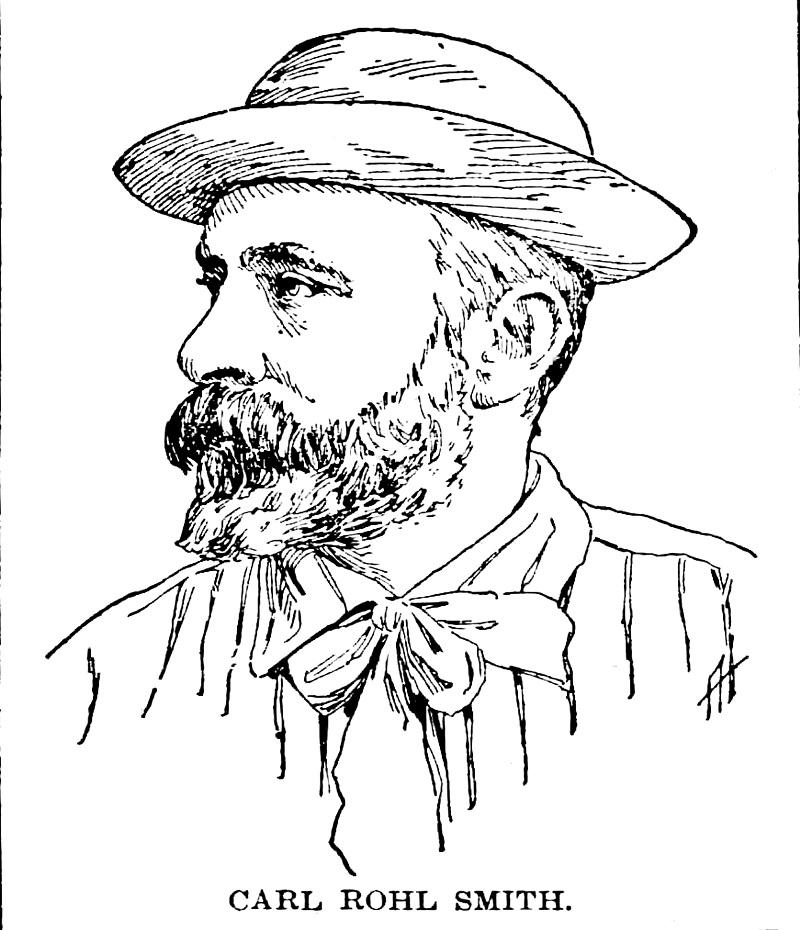
Sculptor Carl Rohl-Smith, around the time when his Benjamin Franklin statue was going to pieces and two other sculptures of the philosopher statesman were being erected. [Image from the Chicago Chronicle June 16, 1895.]
Carl Rohl-Smith after the Fair
While twice passed over to have his plaster Benjamin Franklin immortalized in bronze, Carl Rohl-Smith continued his work in Chicago for four years after the World’s Fair. “He was well liked by the Danes who visited him in his studio in Chicago,” reported the Danish-American newspaper Revyen. The sculptor gave a lecture at “Echoes of the White City—The Midway,” a fundraiser held in Chicago in November of 1894. Public statues can be tricky business—today and through much of history—and Rohl-Smith’s final three major works, each in their own way, became lightning rods for controversy.
Even before Benjamin Franklin was erected on the Columbian Exposition grounds, it earned the artist another important commission. One of Chicago’s wealthiest and most influential citizens, train car magnate George M. Pullman, visited the fairgrounds with architect Solon S. Beman in the fall of 1891, where they came across Benjamin Franklin in the sculptural workshop. Taken with Rohl-Smith’s depiction of the “Modern Prometheus,” Pullman approached him to design a monument to commemorate a violent episode in early Chicago history. The artist received a contract by June 1892 for the Fort Dearborn Massacre Monument, which was placed at the presumed site of the bloody conflict of 1812 near Pullman’s Prairie Avenue mansion. Protests alleging false representation of Indians motivated the city of Chicago to remove the monument from public view in 1997, and it remains stored in an undisclosed warehouse.
His second major commission in the post-Fair years was to complete work on a design by the late Harriet Ketcham for the Iowa Soldiers’ and Sailors’ Monument (1894–96). Controversies over its location and the depiction of a bare-breasted woman on the north side (said to be an allegorical figure of Iowa as a mother offering nourishment to her children) delayed its formal dedication until 1945. The monument stands today at 1001 East Walnut Street, opposite the Iowa State Capitol, in Des Moines.
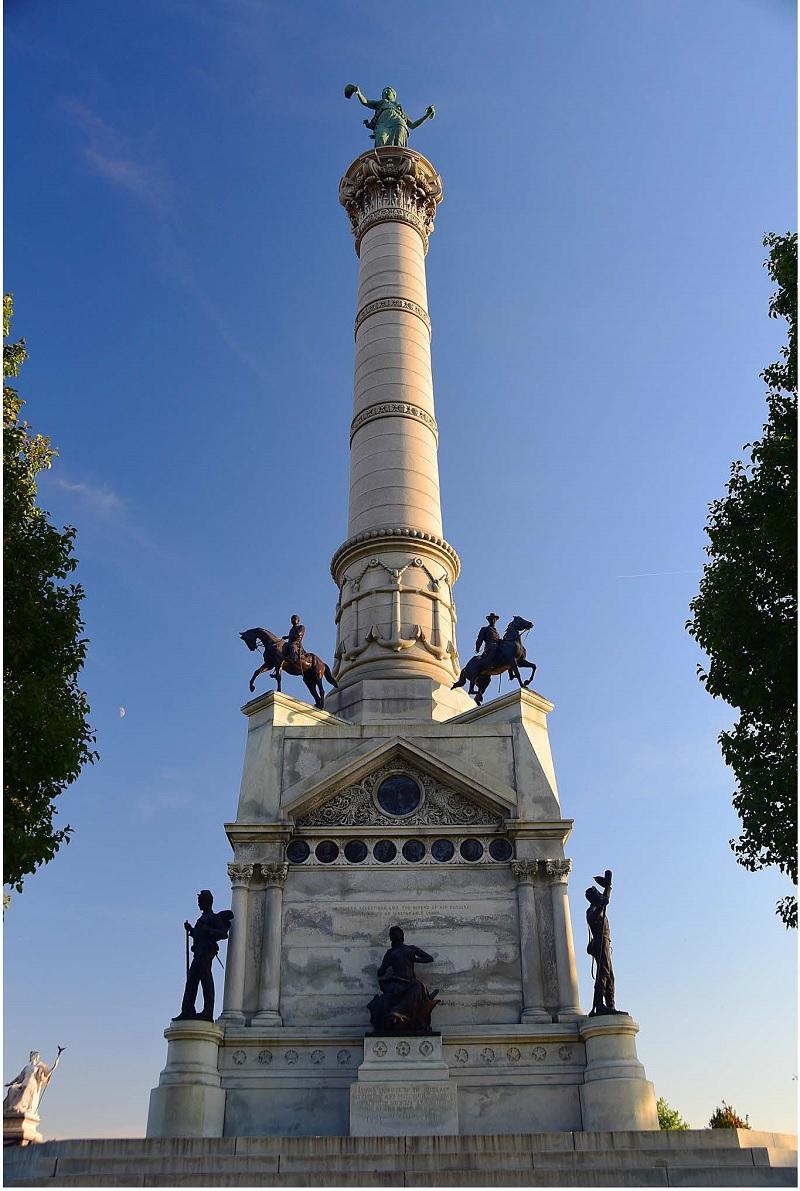
The Iowa Soldiers’ and Sailors’ Monument, completed by Carl Rohl-Smith (1894–96), in Des Moines, IA. [Image from the Iowa Legislature.]
Carl Rohl-Smith spent his last few weeks of life in his homeland of Denmark. On August 20, 1900, he died of nephritis at St. Josef’s Hospital in Copenhagen with his wife by his side. Reportedly, his still-uncompleted Sherman Monument occupied his last thoughts in life. Perhaps his best-known work, the monument was finished in the years after his death by his wife and a group of other sculptors. President Theodore Roosevelt dedicated the Sherman Monument on October 15, 1903, where it stands just south of the Treasury Building between the White House South Lawn and the Ellipse.
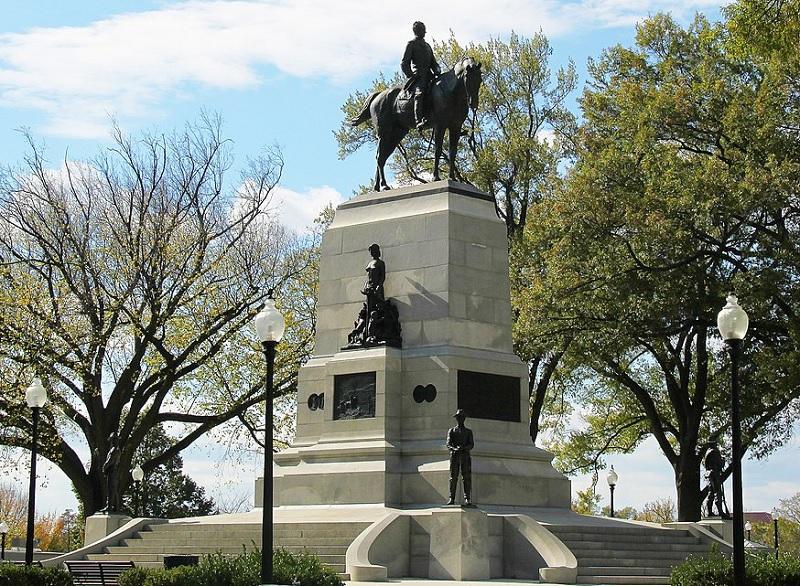
Carl Rohl-Smith’s William Tecumseh Sherman Monument in Washington, D.C., completed by his wife. [Image from Wikipedia.]
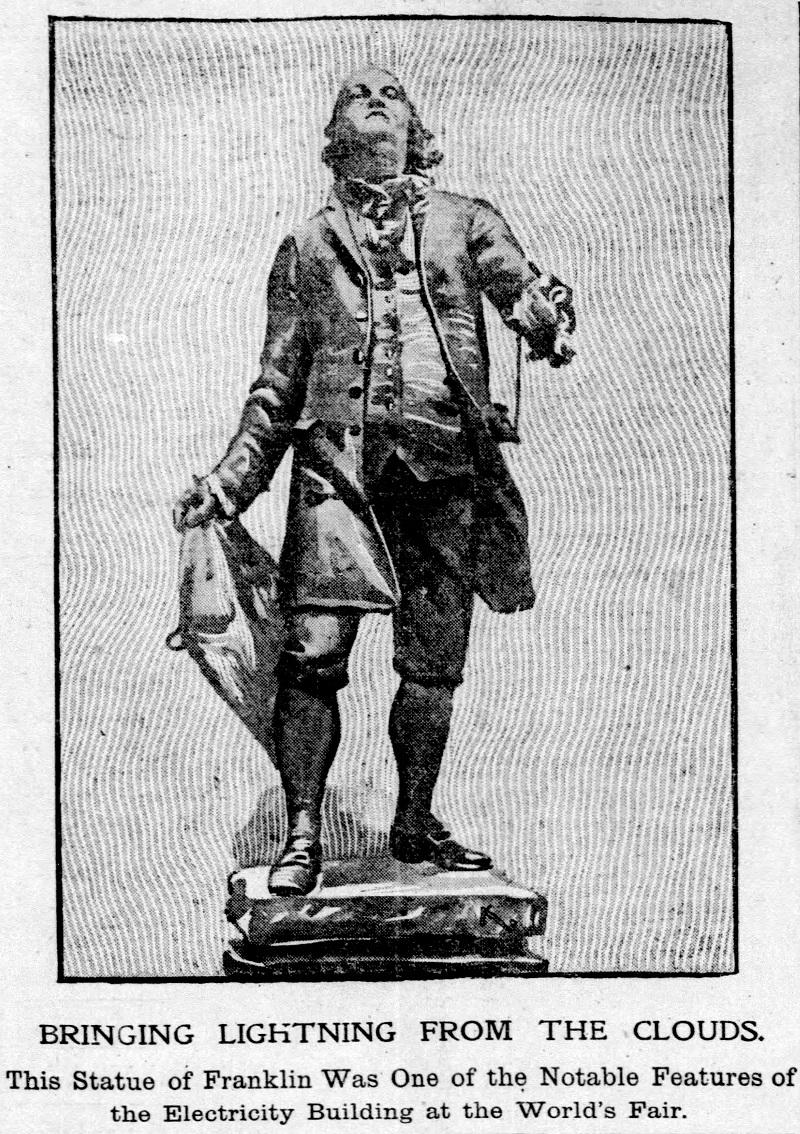
Although the 1893 World’s Fair statue showing Benjamin Franklin “Bringing Lightning from the Clouds” remained a vibrant memory in Chicago in 1900, the name of its creator was not. [Image from the Chicago Tribune Jan. 17, 1900.]
SOURCES
Allison, Young E. “The Franklin Statue” Engineering Magazine Mar. 1892, pp. 827–29.
“Alumni Day” Daily Pennsylvanian Jun. 8, 1894, p. 1.
Bak, Aase “He Came He Saw He Conquered” The Bridge, 1986, Vol. 9, No. 2, pp. 68–76.
“The big statue …” Chicago Inter Ocean Jun. 7, 1894, p. 6.
“Carl Rohl-Smith Dead” Revyen Aug. 25, 1900
“The Class of ’98 …” Daily Pennsylvanian Dec. 4, 1894, p. 4.
“Commencement Week” Daily Pennsylvanian Apr. 17, 1894, p. 1.
Duane, Russell An Oration Delivered at the Unveiling of the Statue of Dr. Benjamin Franklin: Presented by the Commissioners of the World’s Fair to the University of Pennsylvania, and Erected in the City of Philadelphia: June 6th, 1894. Maurice H. Powers, 1894.
“Electricity at the World’s Fair” Western Electrician Jan. 13, 1894, p. 22.
“Fine Work by Carl Rohl-Smith” Chicago Chronicle Jun. 16, 1895, p. 11.
“Franklin’s Statue Going to Decay” Philadelphia Inquirer Aug. 25, 1895, p. 3.
Higinbotham, H. H. Report of the President to the Board of Directors of the World’s Columbian Exposition. Rand, McNally & Co., 1898.
Map of a Portion of the Campus of the University of Pennsylvania, Surveyed, October 1895.
Nitzsche, George Erazmus University of Pennsylvania, Its History, Traditions, Buildings and Memorials; Also a Brief Guide to Philadelphia. International Printing Company, 1918.
“The recent gift …” Daily Pennsylvanian Oct. 30, 1895, p. 2.
“Rohl-Smith Statue of Franklin Going to Pieces” Western Electrician Nov. 23, 1895, p. 256.
“Sculptor Carl Smith Dead” Boston Globe, Aug. 22, 1900, p. 2.
“Unveiling of the Franklin Statue” Chicago Tribune Jun. 5, 1896, p. 10.

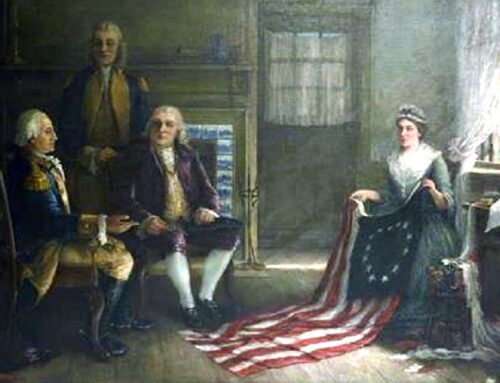
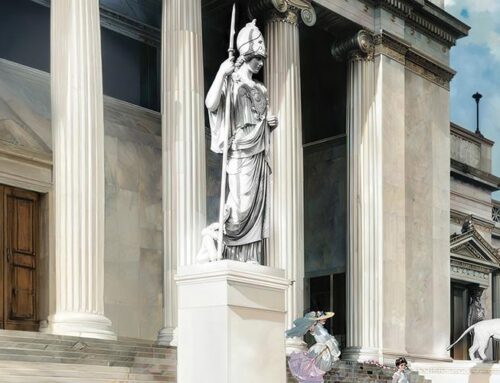
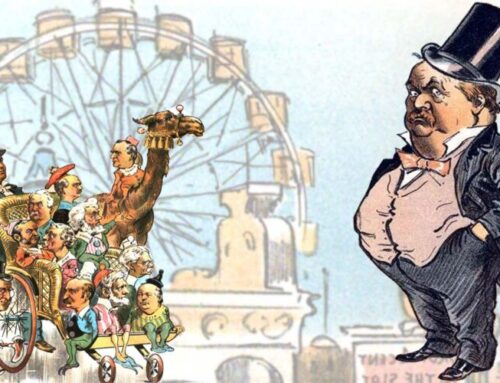
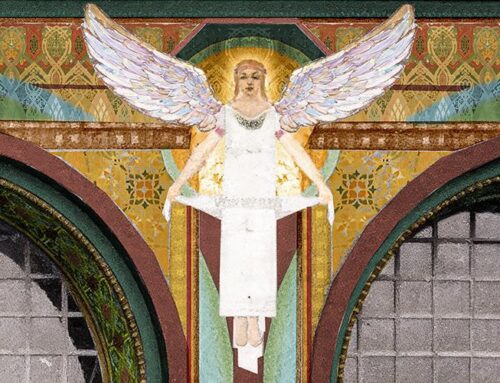
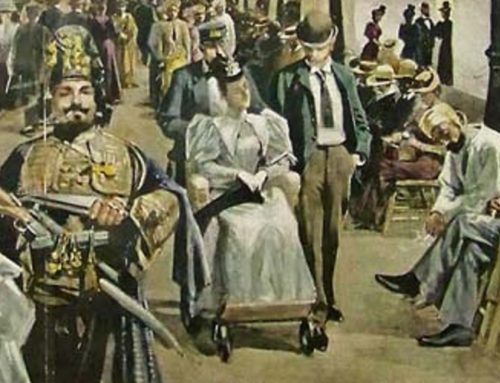
Leave A Comment